Bread, pho, coffee, or caramel are our daily familiar food but not many of us know that they originated from the fusion of Vietnamese and French cuisine.
French
imprints appear in different cultural fields of Vietnam. That was the result of
the historical encounter at the end of 19th century through the beginning of
20th century and also of the willing acceptance of the Vietnamese later. Many
French dishes were Vietnam-ized to match our tastes and they had become our
common food today.
From ingredients to
cooking methods
Although
there is documented evidence that Vietnamese start to eat beef after the Mongol
invasions of the 13th century (two of their common dishes are seven-course beef
and Mongolia hot pot), there are more sources claiming that it was the French
who showed the Vietnamese how to eat beef and they turned beef into one of the
most important meat food in Vietnamese diet. Before French colony, the
Vietnamese had treated cows, ox, and buffaloes as useful friends and an asset
rather food. This theory is more logical when we link to the most common
Vietnamese dish: Phở and the most common western dish in Vietnam: beefsteak and
French fries. The French also brought sardine and the method of cooking offal
(guts and plucks from animals). French and Vietnamese cuisine also interfered
at having snails, frogs, and eels for food.
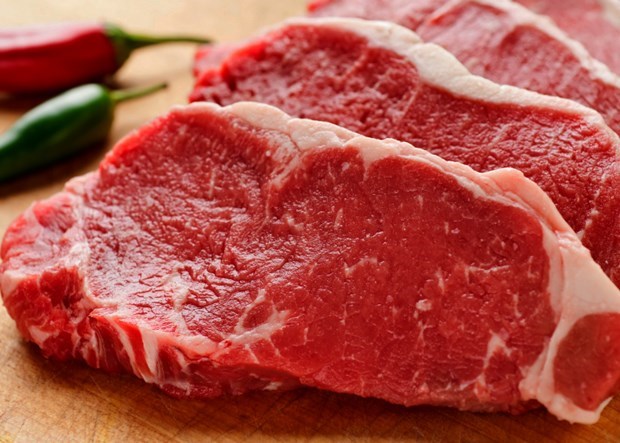
Beef is exotic ingredients in Vietnam, which was originated in France.
Besides
beef, we have to appreciate the French because they brought a part of their
garden to Da Lat city in the 1890s. It’s easy to recognize all exotic
vegetables which were brought from France, such as potato, onion, celery, leek,
and asparagus. Moreover, there were totally strange vegetables that never been
in Vietnam before like tomato, carrot, beet root, kohlrabi, bell peppers (or
capsicum), cauliflowers and broccoli, artichokes, chayote, pumpkin, zucchini,
all types of lettuce, cabbage, peas and beans, and dills. Can’t count all
vegetables that the French first grew in Viet Nam, including coffee trees and
rubber trees, and left a wonderful western garden here beside that hundred years’
war.
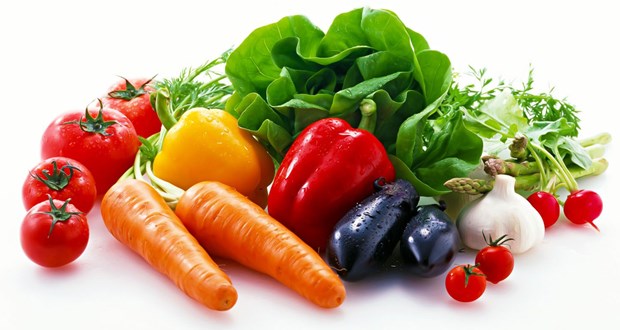
Plenty of fruits and vegetables were brought to Vietnam by the French.
Sometimes
diners have to admit that some restaurants in Vietnam are so French-like. We
can name many western dishes as duck in orange juice of Vietnam - a beautiful
version of Duck à L’orange, vinegar dressing salad from vinaigrette, pepper
steak, ragout, rotisserie, or chicken in red wine from log au vin. Cooking with
alcohol is another example since Vietnamese people had not use beer or wine to
cook before encountering French cuisine.
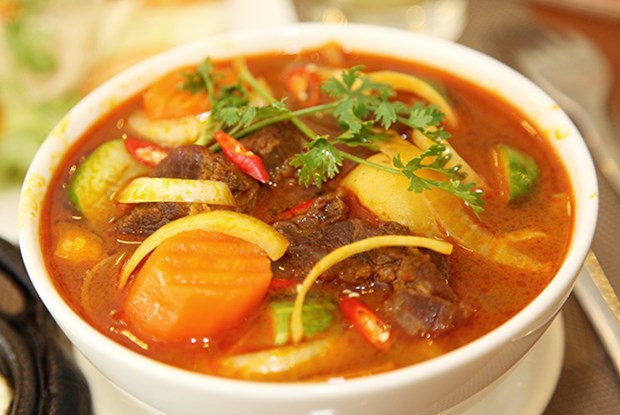
Ragout meat and vegetables, usually served with bread or fresh rice noodles.
Cooking
methods of those dishes are not too far from their origins. The Vietnamese
based on the key cooking methods of the French and added our creativeness into
final works. For examples, beef in wine sauce is cooked by stewing beef until
tender of the France but the Vietnamese adjust the flavor by adding cinnamon
and anise. Basically, ragout is to well stew meat with vegetables and
seasonings and terrine is to steam warped pork paste. People believe that the
French had brought absolutely new techniques to Indochina, where people here
just all practicing Chinese cooking methods as boiling and stir frying. New
French methods have to be counted with grilling, BBQ-ing, sauté-ing, stewing,
and especially farci (stuffing) like crab farcies, tomato farcies, squid
farcies, and many more different objects to be stuffed.
Eating phở, bánh-mì
(bread) with coffee – is that folk?
A
loaf of bread (or a bowl of phở) and a glass of iced coffee have become a
routine of Vietnamese people.
Quite
many sources said that Vietnamese phở was influenced by a Chinese food called
“buff with rice noodles”. In fact, the cooking methods of those 2 dishes are
totally different. The broth of phở applies consommé and all spicy ingredients
are grilled before being boiled. It shows how delicate Vietnamese cuisine is
when it combines clear broth of the French and fresh rice noodles of the
Chinese and paved a path for Phở to go into Oxford dictionary in 2007.
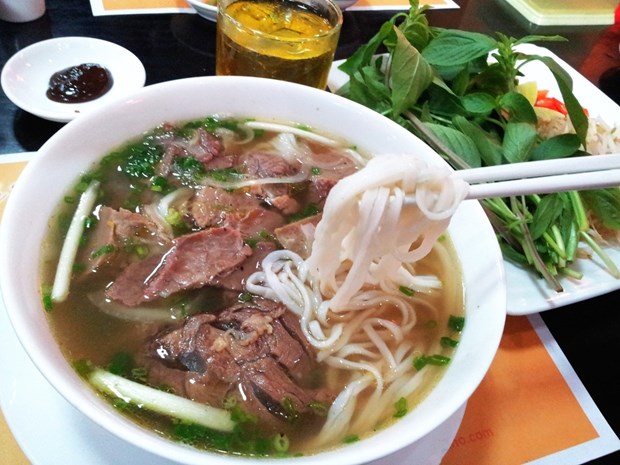
Phở is a typical and common food when mentioning Vietnam.
An
indispensable partner of phở is bánh-mì (bread). Baguettes is like the most
useful gift that the French gave to Vietnamese and the local people had made a
thinner, crispier, lighter, more hollow, and more romantic. Instead of French
salami and cheese, we have homemade mayonnaise, butter, char-siu of Chinese or
grilled meat, with pickles and pate. We have to count other types, which are
very French, such as Vietnamese pork paste (like terrine), fried eggs (like
oeufs au plat), ommlette, or sausages (saucisse) and jambon. Wow! How did
people could imagine elegant French baguettes turn into popular convenient
street food that everybody might take a bite?
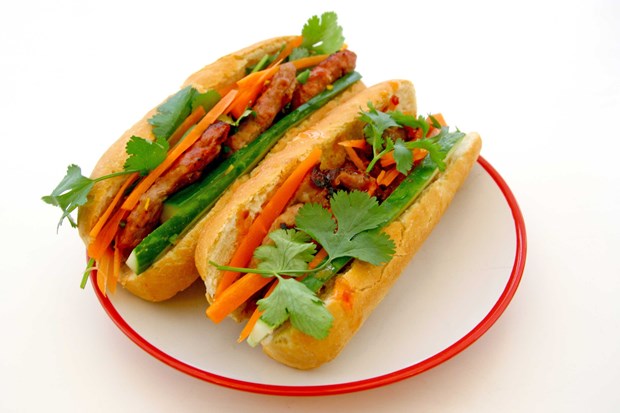
Vietnamese bread – a beautiful yet popular piece of art in culinary world.
People
rarely know that the coffee culture of Vietnam and French are pretty much
alike. Around 1919, the French brought Arabica coffee seeds to Vietnam. They
just did not expect that their coffee culture imported into their colony right
after that (Indochine, 2011, p.175). The French drink filtered coffee, which is
a big invention of Jean-Baptiste de Belloy, and coffee must be slowly savored
in a private space rather than using it as some kinds of ecstasy for work like
other countries’ cultures. Do you remember the image of a leisure coffee shop
at a crowded corner in France? Let’s compare it with Saigon or Hanoi and you’ll
love how they and we treat the coffee.
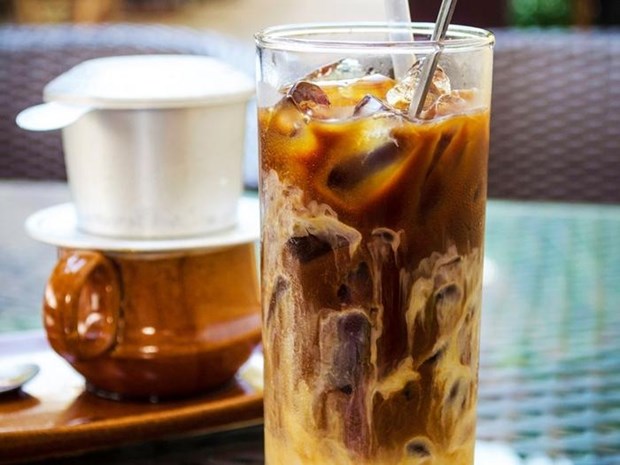
Ice coffee (with and without condensed milk) is an indispensable morning drink in Vietnam.
After
eating and drinking, we should end up with a full tray of desserts, shouldn’t
we? From single or incorporation bakeries, from small to big glass cabinets we
can see everywhere, and full pate chaud in a small glassy container full of
pate chaud on a bike of street vendors always make me happy so much. Together
with fair butter, the French did not know that sweets and cakes, which they
brought to Vietnam, could be amazingly improvised and they have dramatically
thrived here. Some common desserts are jelly, cake (gateau), custard,
croissants, choux pastry, tart, banana crepe or fritter, meringue, or chocolate
éclair, mille feuilles (thousand layers), and of course, yogurt.
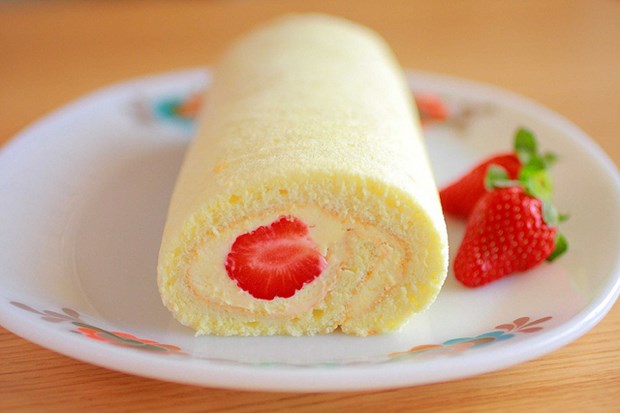
Vietnamese received delicious and catchy-looking French desserts and we have developed them in our own way.
Flan
cake or crème caramel is the result from steaming the mixture of eggs, milk,
and caramel. Vietnamese has enriched the flan by adding a bit of coconut milk
into the mixture and serving it with black coffee. It came out a much better
version of the French flan. Since it was brought into Vietnam by the French, it
has been gradually popular in most cities all over the country.
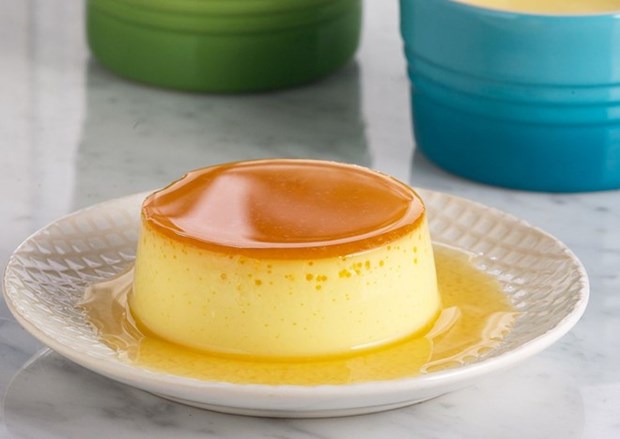
Flan or caramel cake has become a favorite common dessert of Vietnamese.
We
can tell that Vietnamese have absorbed, developed, and made French cuisine to
thrive in our culinary history. Such a delicate and sensitive interference
between 2 totally different culinary cultures.
By Phien Nghien/
Amthuc365